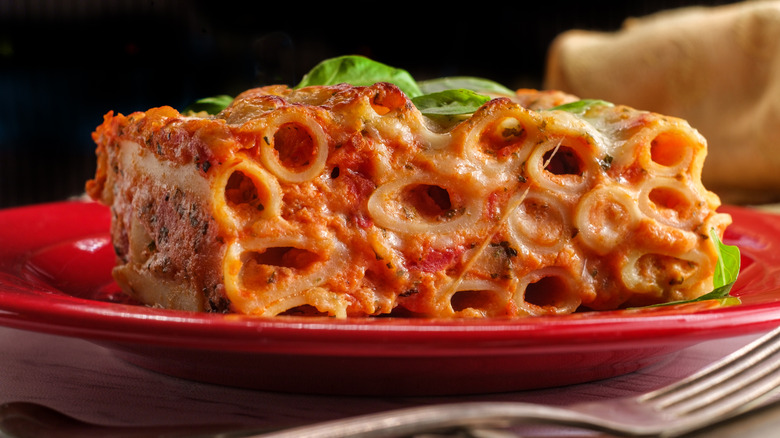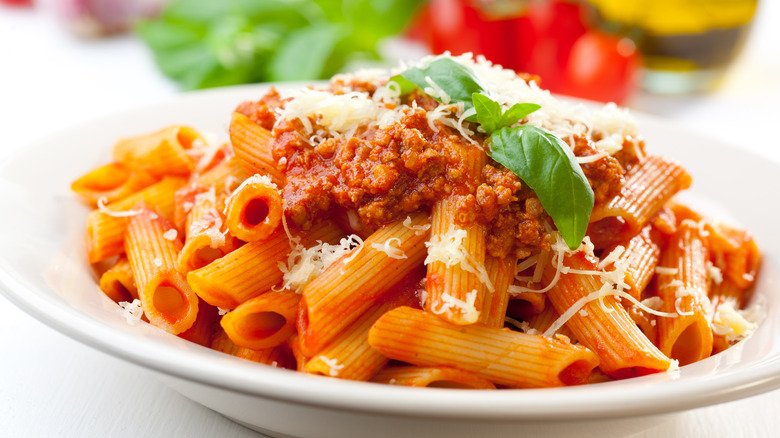The Textural Difference Between Ziti And Penne Pasta
The world of pasta shapes is rich with amazing variety that even two as seemingly similar as ziti and penne can carve out rolls for themselves. The two tubular pastas originated from different regions of Italy — penne is from Genoa in the North and ziti is from Naples in the South, and the pasta sauces and preparations used in those regions have led to the different textures that define ziti and penne. Penne is usually ridged, while ziti is smooth.
Penne's ridges help sauce to cling better to the outside of the pasta than it does with ziti. By pairing that texture with its diagonal cut and larger interior, penne is made for delivering tons of sauce with every bite. Those ridges also contribute to the quality of your pasta water, as pastas with more texture will release more starch into the water, and make it even better for thickening your sauce. Ziti has an exterior made for being coated with a thin, even layer of sauce, and its thickness gives it a better, more tender texture when exposed to longer cooking times.
Penne's rough texture makes it great for sauces, while ziti is smooth for baking
Baked ziti is probably the most well-known and popular dish that uses the pasta, and that's no accident. In Southern Italy where ziti was created, baked pasta dishes are much more common, and ziti's texture and size is ideal when it comes to those thicker sauces and the higher heat of the oven. Meanwhile, Northern Italy is the land of chunkier meaty sauces like Bolognese, which would slide off smoother pastas, hence the need for penne's ridges. Because of its texture, penne is made to be cooked quicker to al dente and then tossed with heavier sauces right before serving so it can hold up to them without getting soggy.
In addition to the classic baked ziti, you can use it in other baked pasta dishes, like a baked Alfredo. Try it with a spicy arrabbiata, or a hearty stovetop dish like alla Norma. As for creamy sauces, both penne and ziti can work. Heavier ones like vodka are better with penne, while you can try ziti with a thinner al limone. As long as you let the texture be your guide, both penne and ziti will deliver the hearty pasta experience you love.

